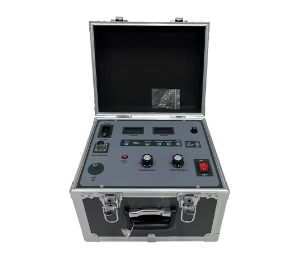 English
English


high voltage injection test
High Voltage Injection Test An Overview
High Voltage Injection Testing (HVIT) is a crucial procedure used in the electrical engineering and power systems domain to evaluate the insulation integrity of electrical equipment and components. This testing methodology plays a fundamental role in ensuring the reliability and safety of electrical systems, particularly in high voltage environments. In this article, we will explore the significance, methodology, and applications of high voltage injection testing.
Significance of HVIT
As electrical systems age, their insulation materials can degrade due to various factors including temperature fluctuations, mechanical stress, and environmental conditions. This degradation can lead to insulation failures, which may cause equipment malfunction, downtime, and even catastrophic failures. HVIT is vital for identifying potential weaknesses in insulation before they lead to serious issues. By conducting HVIT, organizations can effectively prevent accidents, extend equipment lifespan, and ensure compliance with safety standards.
Methodology of High Voltage Injection Testing
The high voltage injection test involves applying a controlled high voltage to the insulation of electrical equipment. The test aims to assess the dielectric strength of insulation materials and identify any breakdowns or weaknesses. Typically, the process consists of several key steps
1. Preparation Prior to testing, equipment must be isolated from the power supply and prepared according to safety protocols. The testing environment should be free from moisture and contamination, as these factors can influence the results.
2. Selection of Voltage Level The voltage level to be applied during the test is determined based on the specifications of the insulation being tested. This voltage is usually higher than the normal operating voltage of the equipment to create a thorough assessment of its dielectric properties.
3. Execution of the Test Using a high voltage power supply, the selected voltage is gradually applied to the insulation system. The test can be done in several modes, including AC, DC, or impulse voltages, depending on the specific requirements and standards applicable to the equipment.
4. Monitoring and Analysis During the test, electrical parameters such as current leakage and dielectric strength are monitored. Any significant increases in current can indicate insulation breakdown or degradation. Post-test analysis involves evaluating these parameters against established benchmarks and standards.
high voltage injection test

5. Reporting Following the testing procedure, a detailed report is generated that summarizes the findings, highlights any anomalies, and provides recommendations for corrective actions if necessary.
Applications of High Voltage Injection Testing
HVIT is utilized across various industries and applications involving high voltage equipment, including
- Power Generation In power plants, HVIT is used to test transformers, generators, and switchgear. Ensuring the integrity of these components is essential for preventing unplanned outages and maintaining efficiency.
- Utilities Electric utility companies rely on HVIT to assess the condition of their transmission and distribution systems. Regular testing helps in identifying potential failures that could disrupt service and lead to financial losses.
- Manufacturing In manufacturing processes that involve proprietary equipment or products, HVIT serves as a quality control measure, ensuring that products meet safety and performance standards before delivery.
- Research and Development New materials and designs undergo HVIT as part of their validation process, ensuring they can withstand the rigors of their intended applications.
Conclusion
High Voltage Injection Testing is an indispensable practice in the maintenance and operation of electrical systems. By identifying insulation weaknesses before they lead to serious failures, HVIT helps to protect both personnel and equipment. As technology continues to evolve, advancements in HVIT methodologies and technologies will undoubtedly enhance the safety and efficiency of electrical systems across various sectors. Embracing such testing protocols not only safeguards investments but also plays a vital role in the overall sustainability of electrical infrastructure.
-
Differences between open cup flash point tester and closed cup flash point testerNewsOct.31,2024
-
The Reliable Load Tap ChangerNewsOct.23,2024
-
The Essential Guide to Hipot TestersNewsOct.23,2024
-
The Digital Insulation TesterNewsOct.23,2024
-
The Best Earth Loop Impedance Tester for SaleNewsOct.23,2024
-
Tan Delta Tester--The Essential Tool for Electrical Insulation TestingNewsOct.23,2024





